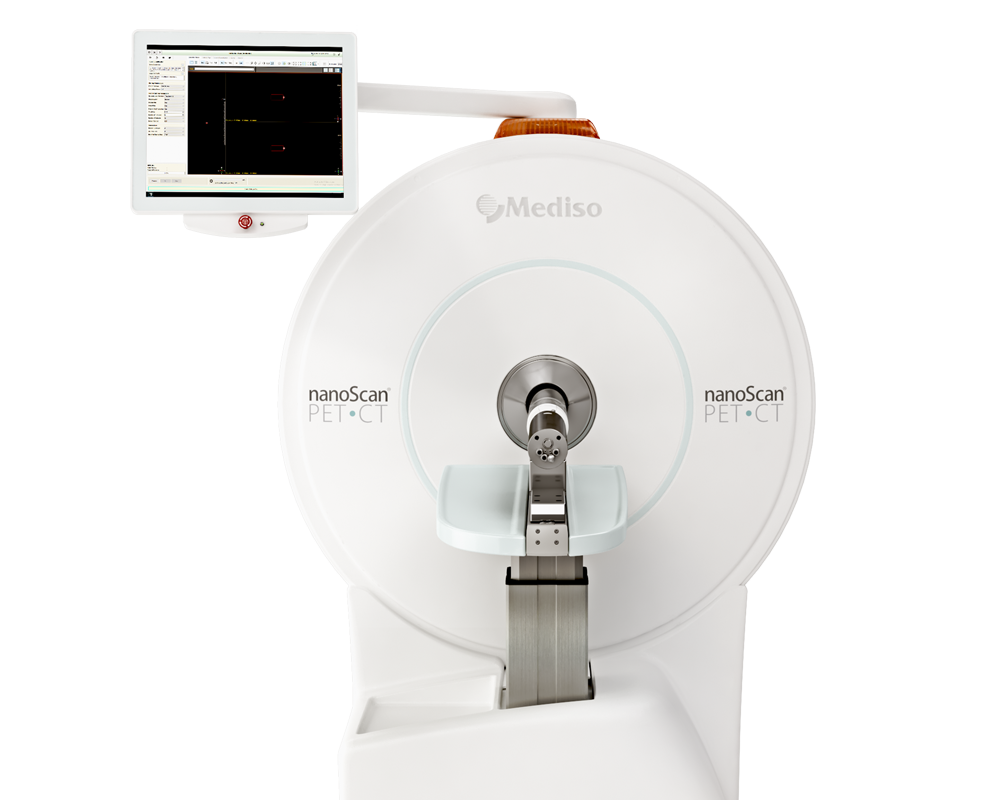Fibrillar amyloidosis and synaptic vesicle protein expression progress jointly in the cortex of a mouse model with β-amyloid pathology
2025.03.25.
L. H. Kunze et al., NeuroImage, 2025
Summary
Neurodegeneration, accumulation of β-amyloid (Aβ) plaques, and neuroinflammation are the major hallmarks of Alzheimer’s disease. Here, we aimed to investigate the temporal and spatial association between synaptic activity, Aβ plaque load, and neuroinflammation in an Aβ mouse model with limited neurodegeneration.
26 APPSL70 and 15 C57Bl/6 mice underwent longitudinal PET-scans with [18F]UCB-H from plaque onset to levels of strong plaque load (5.3 - 11.0 months of age) to assess the synaptic vesicle protein 2A (SV2A) expression, [18F]FBB to determine the fibrillar Aβ plaque load, and [18F]GE-180 and [18F]F-DED to assess microglial and astroglial (re)activity. Statistical parametric mapping was performed to uncover similarities between the binding patterns of all four tracers.
We found a continuous increase in Aβ-PET in APPSL70 mice from 5.3 to 11.0 months of age, resulting in a significantly higher [18F]FBB PET signal in the cortex, hippocampus, and thalamus of APPSL70 mice compared to C57Bl/6 mice at 11.0 months of age. Parallel increases in SV2A-PET signals were observed in the cortex and thalamus of APPSL70 mice compared to C57Bl/6 mice. Statistical parametric mapping revealed a similar pattern of Aβ- and SV2A-PET differences (dice coefficient 53%). Patterns of microglia activation showed stronger congruency with SV2A expression (dice coefficient 58%) than patterns of reactive astrogliosis (dice coefficient 26%).
APPSL70 mice with limited neurodegeneration comprise a close temporal and spatial association between SV2A expression, Aβ plaque load, and microglial activation. SV2A PET aging in APPSL70 mice may facilitate longitudinal monitoring of increased synaptic activity in the earliest phase of AD.
Graphical abstract

Results from nanoScan® PET/CT
By applying the nanoScan PET/CT system the authors published the first multiple-tracer longitudinal study describing the association of Aβ plaque deposition, SV2A expression levels, and neuroinflammation in a mouse model of Alzheimer's disease with limited neurodegeneration
For each PET image, four mice were scanned simultaneously and irrespective of their genotype in a randomized way in the Mediso nanoScan® PET/CT with a dynamic 60 min emission recording for [18F]UCB-H, and static 30-60 min p.i. imaging windows for [18F]FBB and [18F]F-DED, as well as 60-90 min p.i. in the case of [18F]GE180. Mice were injected an average dose of 15.2 ± 1.6 MBq of [18F]UCB-H, 14.0 ± 3.2 MBq of [18F]FBB, 10.3 ± 3.6 MBq of [18F]F-DED, and 13.8 ± 2.7 MBq of [18F]GE-180.
Images were spatially normalized to a template and subsequently adjusted to the tracer uptake in the hypothalamus by calculating a standardized uptake value ratio (SUVr).
Key findings using the results produced by the nanoScan® PET/CT scanner:
- As a baseline the system made observable that the hypothalamus is the suitable uniform reference region to be used to normalize the PET signal for all four tracers.
- Longitudinal PET scans with [18F]UCB-H helped to assess the synaptic vesicle protein 2A (SV2A) expression, using [18F]FBB the authors determined the fibrillar Aβ plaque load, and by using [18F]GE-180 and [18F]F-DED they assessed microglial and astroglial (re)activity.
- It was found that [18F]UCB-H PET signal increases during aging in APPSL70 mice compared to C57Bl/6 controls.
- By comparing the distribution of [18F]FBB and [18F]UCB-H with statistical parametric mapping similar regional group differences for Aβ and SV2A were revealed.
- Patterns of microglia activation showed stronger congruency with SV2A expression than patterns of reactive astrogliosis.
- It was demonstrated that SV2A PET imaging in APPSL70 mice may facilitate longitudinal monitoring of increased synaptic activity in the earliest phase of the Alzheimer’s disease.

Figure 3. Statistically significant group differences calculated by statistical parametric mapping for TSPO (a) and MAO-B (b) between 11.0 months old C57Bl/6 and APPSL70 mice with the respective z-scores of the cortex, hippocampus, and thalamus at 5.3, 8.9, and 11.0 months of age.
Conclusions
Increase of synaptic density as measured with [18F]UCB-H in an amyloidosis mouse model was demonstrated associated with Aβ deposition and microglial inflammation, but not with astrogliosis. Based on their findings the authors presume a compensatory mechanism leading to a higher synaptic density in early stages of Alzheimer's disease before the onset of neurodegeneration. The nanoScan® PET/CT system enabled accurate, high-resolution imaging, supporting useful read-out for the presymptomatic stages of AD and possibly also other neurodegenerative diseases, especially in selecting patients for clinical trials for diagnostic tools and possible treatment options by evaluating the changes in SV2A expression as measured by [18F]UCB-H PET.
Full article on ScienceDirect.com
How can we help you?
Don't hesitate to contact us for technical information or to find out more about our products and services.
Get in touch